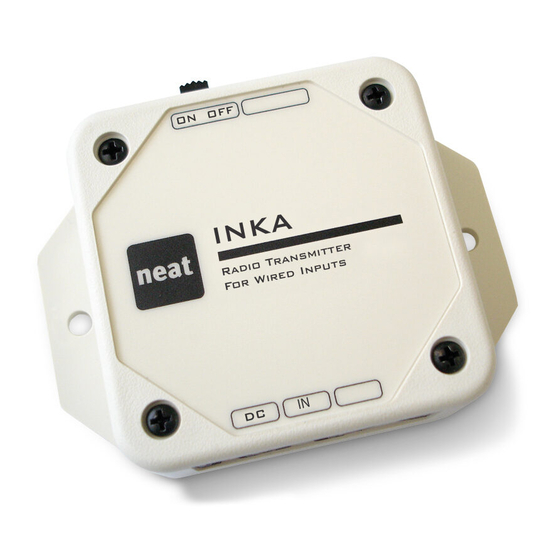
Table of Contents
Advertisement
Advertisement
Table of Contents

Summarization of Contents
Introduction and Product Overview
About This Manual
Outlines the manual's purpose, scope, and how to use it for IOR Family products.
Device Descriptions (INKA, IOR, REPO, LINK)
Details the functionality and physical attributes of INKA, IOR, REPO, and LINK devices.
Connectors
Specifies connector types and their functions for INKA, IOR, REPO, and LINK units.
Power Switch
Explains the operation of the unit's power switch.
Mounting Holes
Describes the physical mounting hole specifications for wall mounting.
Battery Types and Power Sources
Covers battery requirements for INKA and power source for IOR, REPO, and LINK devices.
AC/DC Adapter Specifications
Details the required AC/DC adapter and its connection.
Wired Input Connections (INKA, IOR)
Describes how to connect wired sensors to the input connectors of INKA and IOR.
Wired Output Connections (IOR, REPO, LINK)
Explains how to connect equipment to the output connectors of IOR, REPO, and LINK.
Configuration and Programming
PC Programming with NEAT Programming Unit (NPU)
Guides on installing and using the NPU software for configuring IOR family devices.
Jumper Configuration Settings
Details how to configure device parameters using internal jumpers on the PCB.
System Operation and Event Handling
Radio Reception and Event Processing
Explains how IOR, REPO, and LINK units receive and process incoming radio messages.
Wired Input Configuration and Triggering
Covers setup of digital and analog wired inputs for INKA and IOR, including trigger conditions.
Wired Output Control and Relay Actions
Describes relay actions for wired outputs controlled by wired inputs or received radio messages.
Radio Transmission and Alarm Configuration
Details outgoing radio message parameters, ID codes, alarm types, and transmission settings.
Power Mode and Battery Management
Covers configuration of power modes (normal, power save) and battery charge duration.
Technical Alarms and System Status Monitoring
Explains configuration of test alarms, battery alarms, mains failure, and mains OK notifications.

Need help?
Do you have a question about the LINK and is the answer not in the manual?
Questions and answers